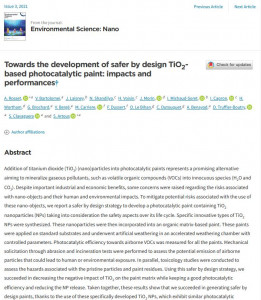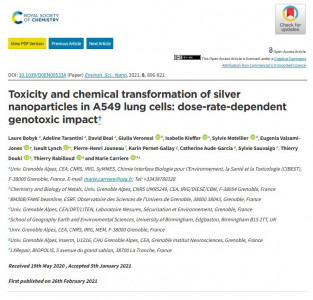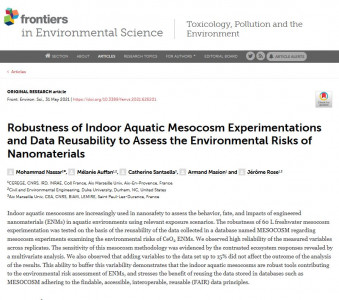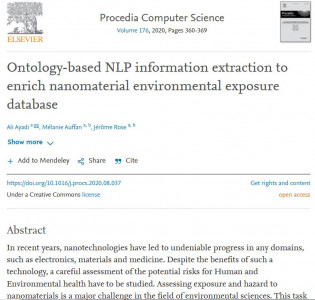The ISTerre, a joint CNRS & University of Grenoble Alpes laboratory, invites applications for a Postdoctoral Fellowship position on
In situ studies of multi-step nucleation pathways in natural and engineered cements
In recent years, multi-step nucleation pathways involving the formation of different precursor phases, such as nanocrystalline and amorphous particles, have been reported for a wide variety of both inorganic and organic systems, including natural and engineered cements. A paradigmatic example is that of the CaCO3 system which, under certain experimental conditions, forms via an amorphous calcium carbonate (ACC) precursor, formed itself via the aggregation of smaller clusters. The amorphous precursor pathway offers an alternative ‘cheaper’ route through the free energy landscape, due to the lower interfacial energies of the intermediate phases, which considerably reduce the height of a single nucleation barrier. In addition, this multi-step pathway probably presents an evolutionary advantage for biominerals, due to the easiness by which the organisms can mold the precursor phase into intricate shapes. Interestingly, we have recently shown that an amorphous precursor pathway can also occur in engineered cements. However, and in spite of the large number of studies aimed at understanding the thermodynamics and kinetics characteristics of the amorphous precursor pathway, many questions still remain unanswered regarding the structure and dynamic characteristics of the precursor phase. Moreover, at present it is also unclear what the impact is of ever-present inorganic / organic surfaces, in both natural and engineered systems, on the multi-step nucleation pathway.
To provide answers to these questions, the postdoctoral fellow will develop a work program in two stages. First of all, the kinetics and mechanisms of surface mediated nucleation will be tackled by using a combination of spectroscopy and X-ray scattering techniques. In a second stage, the crystallization pathways of amorphous precursors in natural and engineered cements (in the presence and absence of organic additives), and their structure and dynamics will be studied using a combination of state-of-the-art coherent X-ray and neutron scattering techniques.
The results of this research will have a large impact on (i) our fundamental understanding of multistep nucleation pathways ; (ii) how additives control the nucleation of naturally-occurring cements such as ACC in biominerals ; and (iii) the improved design of additives to control crystallization of engineered cements.
The postdoctoral fellow will be located in Grenoble (France), at the ISTerre laboratory (campus St. Martin d’Heres), in close collaboration with experts from the ESRF, ILL and industrial partners. The postdoctoral fellow will be employed for a period of up to three years, with a competitive salary together with other benefits.
Applicants should hold a PhD degree in physics, chemistry, materials science or a related discipline. A strong background on physics and/or chemistry and previous experience with X-ray and/or neutron scattering and programming skills are highly recommended. The application file should contain a detailed CV, a motivation letter and at least two reference contacts / letters. Deadline for application is 31 of January.
Contact information :
Alejandro Fernandez-Martinez, (+33) 4 76 63 51 97, alex.fernandez-martinez@univ-grenoble-alpes.fr
Alexander Van Driessche, (+33) 4 76 63 51 94, alexander.van-driessche@univ-grenoble-alpes.fr
https://isterre.fr/annuaire/pages-web-du-personnel/alex-fernandez-martinez/article/postdoc-job









